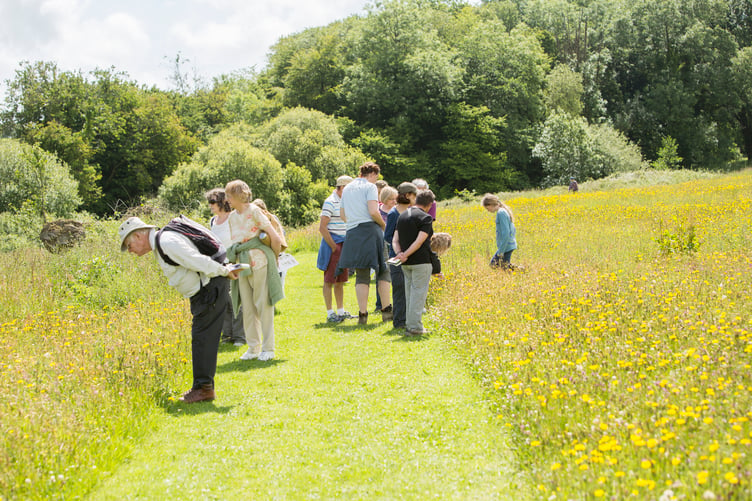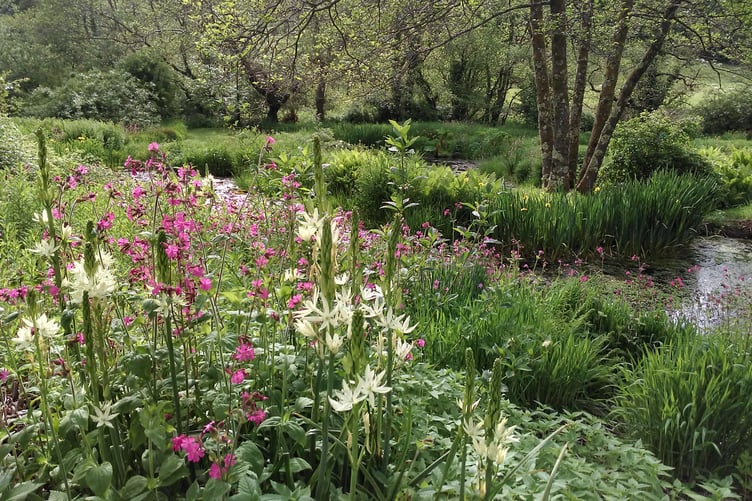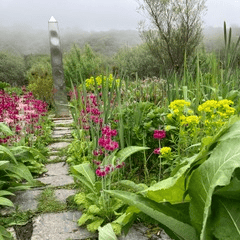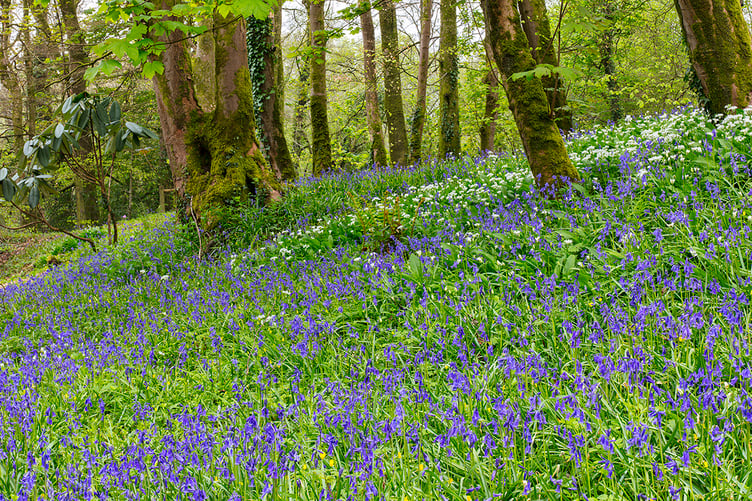The Great Gardens of West Wales, a six-strong group of beautiful venues in Carmarthenshire, Pembrokeshire and Ceredigion, are encouraging visitors to take a walk on the wild side this spring.
Tailored lawned grass is known to have little environmental and ecological benefit so the teams of gardeners at all six of the collection of Great Gardens of West Wales, have individually created unique wild meadow areas which are more supportive in maintaining healthy ecosystems.
Your passport to a wildflower spectacular is the Great Gardens of West Wales (GGWW) leaflet which can be found in most leaflet holders around south and west Wales. Details of how to find all six of the Gardens are in the leaflet. You can also find the GGWW on facebook and Instagram.
Picton Castle and Gardens in Pembrokeshire has a long history of working alongside nature, where wildflowers and ferns are as much valued as the most exotic Rhododendrons in the woodland gardens. The overall effect is a relaxing mix of formality and wildness, spread over fifty acres. The yearly procession of snowdrops, primroses, Tenby daffodils, bluebells and cow parsley, herald the summer. The carefully managed wildflower meadow to the south of the castle, is with each year becoming more diverse in species, with a few more southern marsh orchids appearing annually among the mix of wild flowers. Picton’s newly created little wildlife garden, which aims to demonstrate wildlife attracting features for smaller gardens, includes; night scented plants to attract moths, a pond, a bug house, log piles, a hibernaculum for reptiles and even a home for hedgehogs. Lizards abound in this hot area.

The National Botanic Garden of Wales in Carmarthenshire has over 50 acres of species-rich meadow land on its Waun Las National Nature Reserve. Visitors have the thrilling chance to walk back in time and experience the kind of plants, butterflies, moths, hoverflies, beetles and bees which would once have become common across the Welsh countryside. Expect thousands of orchids in spring, an array of endangered wildflowers and a spectacular purple haze in summer.

The Wild Garden at Cae Hir in Ceredigion offers a safe haven for wild plants that most gardeners will pull up! These include nettles, dandelions, buttercups and a myriad of wild grasses. All would pose a threat to the herbaceous border, but equally all look lovely when left to their own devices as they are here, hand in hand with campions, eupatorium, marsh marigolds and so much more. Offering important sources of food and shelter to all manner of grubs and caterpillars, butterflies and dragonflies, frogs and newts, wild ducks, moorhens and water voles, the beautifully secluded Wild Garden at Cae Hir also has four large natural ponds as well as a natural winding stream alongside the ponds.

In Dyffryn Fernant Garden, near Fishguard in north Pembrokeshire, one of the wildest spaces is Waun Fach, it is a small marsh, which thrums with flora & fauna. Wild angelica, eupatorium, together with ferns, reeds and water mint form part of the natural mix of many species found in Waun Fach. With the mist covering Garn Fawr the self seeded candelabra primulas revel in the damp earth of the Bog Garden. Elsewhere the early purple, or marsh orchid, is spreading with vigour, liking unimproved grassland with the right mycorrhiza, and will be followed by quantities of the later, pink and white dactylorhiza fuchsii.

Upton Castle in Pembrokeshire has several wild areas including its ‘Walk On The Wild Side’. In these places a succession of wild flowers appear throughout the season starting off with the snowdrops, primroses and daffodils closely followed by wood anemones and bluebells and then wild garlic and cow parsley. The most exciting wild feature is the area of Atlantic or Celtic temperate rain forest extending down to the Cleddau estuary. In the United Kingdom these habitats occur only in small pockets on the mild west coast and are characterised by areas of mosses, ferns and lichens covering every surface, even the trunks and branches of the trees. The steep sides of the valley and the tree canopy retain the moisture keeping the humidity and temperate relatively even throughout the year and this lush environment has allowed the trees to grow to exceptional heights. Birdsong fills the air. This very special habitat is incredibly rare and increasingly under threat.

Aberglasney Gardens in Carmarthenshire has been working for many years on a rewilding project that has seen the Gardens move away from conventional amenity lawns in favour of sustainable grasslands and wild meadows. The project, which was started ten years ago, has led to the development of wildflower meadows, spring bulb meadows and evolution meadows in parts of the gardens where manicured lawns existed before. Aberglasney’s woodlands comprise mainly of oak and beech trees in an area that is quite open and sunny which encourages Celandine, Bluebell and Wood Anemone to grow and spread naturally. Brambles and other taller plants are allowed to persist around the edges of the meadow to create a diversity of habitats.

Aberglasney’s Director of Operations Jim Stribling said: “The rewilded areas of these magnificent gardens in West Wales support a great level of biodiversity. There seems to have been a positive change in opinion with gardeners and garden visitors now welcoming biodiversity areas, long grasses and wildflower meadows. We hope the wild garden areas you see when you visit the Great Gardens of West Wales will inspire you to start rewilding your own garden and green spaces.”




